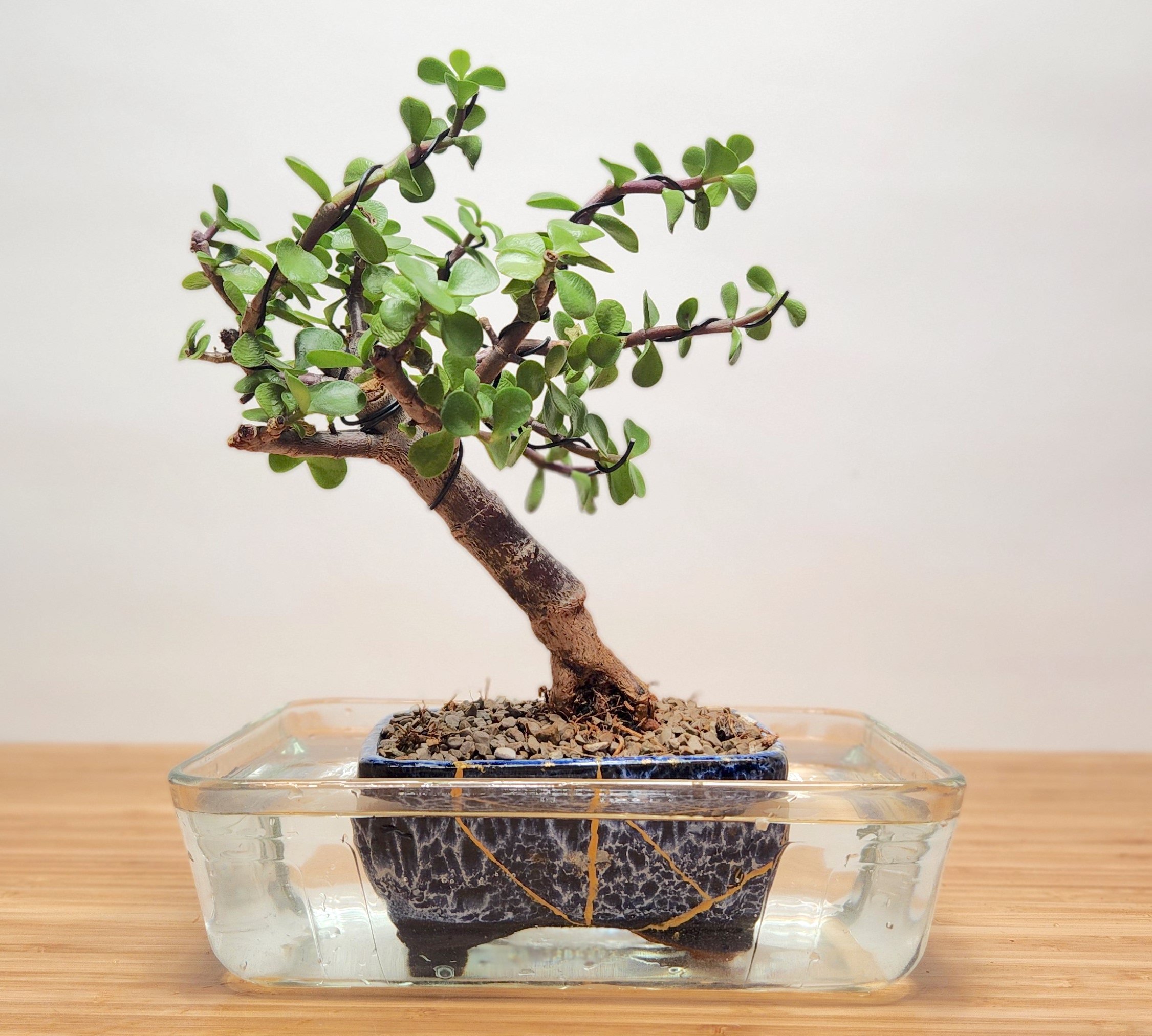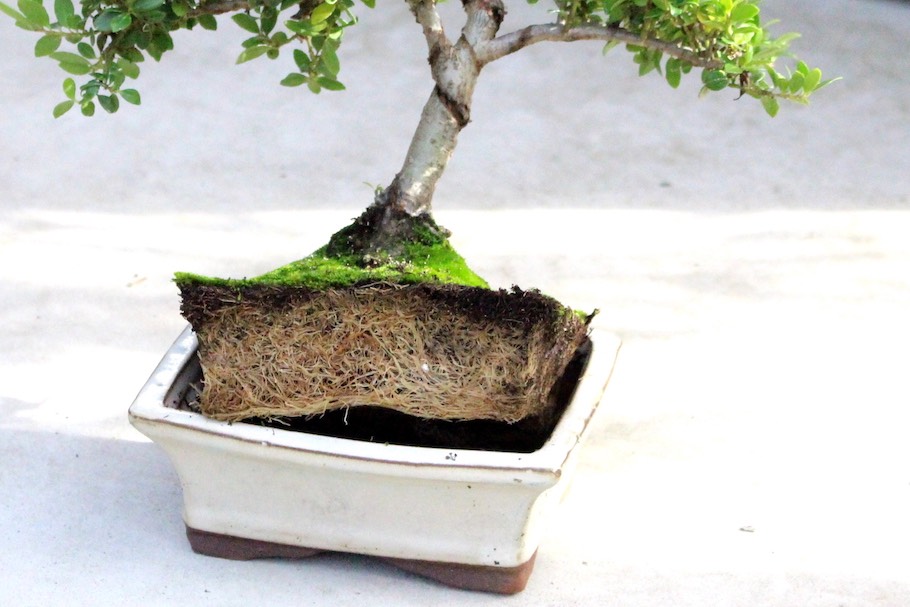Water a bonsai tree when the topsoil feels dry. Typically, this means watering every two to three days.
Bonsai trees require specific care to thrive. Regular watering is crucial, yet overwatering can harm them. Soil type, tree species, and local climate affect watering frequency. Indoor bonsai trees, especially in heated homes, may dry out faster. Outdoor bonsai trees might need more water during hot weather.
Check the soil daily by touching it; water when the top layer is dry. Use a watering can with a fine nozzle to avoid washing away soil. Proper watering ensures healthy growth and prevents root rot. Taking care of your bonsai tree can be a rewarding experience with these simple tips.
Introduction To Bonsai Care
Bonsai trees are tiny trees that need special care. They are very old and need the right amount of water. Giving them too much or too little can be harmful. In this section, we will look at the history of bonsai and why watering is important.
History Of Bonsai
Bonsai started over a thousand years ago in Asia. The word “bonsai” means “planted in a container.” People in China and Japan have grown these tiny trees for many years. They use special tools and techniques to keep the trees small and beautiful.
Importance Of Watering
Watering is the most important part of bonsai care. Bonsai trees are in small pots, so they dry out quickly. If you do not water them, they can die. The soil should be moist but not soggy.
Here are some tips for watering your bonsai:
- Check the soil daily.
- Water when the soil feels dry.
- Use a watering can with a fine spout.
- Water until it drains out of the pot.
Different bonsai trees need different amounts of water. Some trees need more water than others. Pay attention to your tree’s needs.
Factors Affecting Watering Frequency
Understanding how often to water a bonsai tree is crucial. Several factors can influence watering frequency. Below are some key elements that impact how often you should water your bonsai tree.
Tree Species
Different bonsai tree species have different water needs. For example, Juniper bonsai need less water compared to Ficus bonsai. Knowing your tree species helps you understand its watering requirements.
Climate And Weather
Climate plays a huge role in watering frequency. In hot climates, bonsai trees need more water. In cooler climates, they need less. Weather changes also affect watering needs. On hot days, water more often. On rainy days, water less.
Pot Size And Soil Type
The size of the pot impacts how often you should water. Small pots dry out faster than large pots. Soil type also matters. Fast-draining soil needs more frequent watering. Retentive soil holds water longer.
| Factor | Impact on Watering Frequency |
|---|---|
| Tree Species | Different species have different water needs |
| Climate and Weather | Hot climates need more water; cool climates need less |
| Pot Size | Small pots dry out faster |
| Soil Type | Fast-draining soil needs more frequent watering |
By understanding these factors, you can water your bonsai tree correctly. This ensures its health and growth.
Signs Your Bonsai Needs Water
Understanding the signs your bonsai needs water is crucial for its health. Bonsai trees are delicate and require careful attention. By recognizing these signs, you can ensure your bonsai thrives.
Checking Soil Moisture
The first step is to check the soil moisture. Insert your finger about an inch into the soil. If it feels dry, your bonsai needs water. A moisture meter can also help determine the soil’s water content. These tools are simple to use and provide accurate readings.
Ensure the soil is moist but not soggy. Overwatering can harm your bonsai. Use a well-draining soil mix to help manage moisture levels.
Leaf And Trunk Indicators
Leaves are another indicator of your bonsai’s water needs. Wilted or yellow leaves often mean the tree needs water. Healthy leaves should be green and firm.
The trunk can also show signs of dehydration. A healthy trunk is firm and smooth. If the trunk appears shriveled or dry, it’s time to water your bonsai.
Look for any cracks or splits in the trunk. These can signal severe dehydration.
| Indicator | Healthy Sign | Needs Water |
|---|---|---|
| Soil Moisture | Moist | Dry |
| Leaves | Green and Firm | Wilted or Yellow |
| Trunk | Firm and Smooth | Shriveled or Dry |
Credit: www.quora.com
Watering Techniques
Watering a bonsai tree correctly is crucial for its health. Different techniques can help ensure your bonsai gets the right amount of water. Let’s explore two primary methods: the top watering method and the immersion method.
Top Watering Method
The top watering method involves watering from above. Use a watering can with a fine nozzle. This prevents soil erosion. Pour water gently over the soil surface. Continue until water drains from the pot’s bottom holes.
Repeat this process if necessary. The soil should be evenly moist. Avoid overwatering as it can lead to root rot. Check the soil daily. Water when the top layer feels dry.
Immersion Method
The immersion method is another effective technique. Fill a container with water. The container should be larger than the bonsai pot. Submerge the bonsai pot in the water. Ensure the water level reaches just below the pot’s rim.
Let the bonsai soak for 5-10 minutes. Remove the pot and let excess water drain. This method ensures thorough watering. Use this technique once a week or as needed.
| Watering Method | Frequency | Benefits |
|---|---|---|
| Top Watering | Daily or as needed | Even moisture, prevents root rot |
| Immersion | Weekly or as needed | Thorough watering, reaches all roots |
Seasonal Watering Guide
Understanding how often to water your bonsai tree can be tricky. Watering needs change with the seasons. This guide will help you keep your bonsai healthy year-round.
Watering In Spring And Summer
During spring and summer, bonsai trees are in their growth phase. Watering is more frequent during these seasons. Check the soil daily. If the topsoil feels dry, it’s time to water. Use a watering can with a fine nozzle.
- Spring: Water every 2-3 days.
- Summer: Water daily or even twice a day.
Place your bonsai in a shaded area to retain moisture. High temperatures can dry out the soil quickly. Always check the soil before watering.
Watering In Fall And Winter
In fall and winter, bonsai trees enter a dormant phase. Their water needs decrease significantly. Overwatering during these seasons can harm the tree.
- Fall: Water every 3-5 days.
- Winter: Water once a week or less.
Keep your bonsai in a cooler area. This helps to slow down its growth. Use a moisture meter to check soil humidity. This ensures you are not overwatering.

Credit: bonsaibar.com
Common Watering Mistakes
Watering a bonsai tree can be tricky. Many beginners make mistakes that harm their plants. Understanding these mistakes helps keep your bonsai healthy.
Overwatering Issues
Overwatering is a common mistake. It can lead to root rot. When roots sit in water, they cannot breathe. This causes the tree to die.
- Roots need oxygen to stay healthy.
- Too much water cuts off oxygen.
- Root rot is hard to fix.
Signs of overwatering include yellow leaves. The soil stays wet for a long time. A good rule is to water only when the soil feels dry.
Underwatering Risks
Underwatering is also a problem. Bonsai trees need regular water. Without it, they dry out and die.
- Dry soil means no nutrients for the tree.
- The tree may lose leaves.
- It becomes weak and sickly.
Check the soil often. If it’s dry, water your tree. Keep a schedule to avoid forgetfulness.
Expert Tips And Tricks
Caring for a bonsai tree involves careful attention to its watering needs. Experts share their top tips and tricks to help your bonsai thrive. These include using rainwater and knowing the best time to water your tree.
Using Rainwater
Rainwater is the best choice for watering bonsai trees. It is free from chemicals found in tap water. These chemicals can harm your bonsai. Collect rainwater in a clean container. Use it to water your bonsai whenever possible.
Rainwater is naturally soft. This helps maintain the soil’s balance. If you can’t collect rainwater, use filtered or distilled water.
Best Time To Water
Watering your bonsai at the right time ensures it stays healthy. The best time to water is early in the morning. This allows the tree to absorb water before the heat of the day.
Check the soil daily. Stick your finger about an inch into the soil. If it feels dry, it’s time to water. Water the tree until the soil is moist but not soggy.
| Water Type | Benefits |
|---|---|
| Rainwater | Free from chemicals, naturally soft |
| Filtered Water | Removes harmful substances |
| Distilled Water | Pure and clean |
- Use rainwater for best results.
- Water in the morning to help absorption.
- Check soil daily to avoid dryness.

Credit: www.bonsaiempire.com
Tools And Accessories
Caring for a bonsai tree involves using specific tools and accessories. These ensure your tree gets the right amount of water. Let’s explore some essential tools.
Watering Cans And Misters
Using a watering can is crucial. It helps you give just the right amount of water. Choose one with a narrow spout. This allows for precise watering.
A mister is another helpful tool. It keeps the leaves moist. This is especially important in dry climates. A fine mist is best. It won’t disturb the soil or roots.
Soil Moisture Meters
A soil moisture meter is a must-have. It tells you how wet the soil is. This helps prevent overwatering or underwatering.
Simply insert the meter into the soil. The reading will show if your bonsai needs water. This tool takes the guesswork out of watering.
| Tool | Purpose |
|---|---|
| Watering Can | Provides precise watering |
| Mister | Keeps leaves moist |
| Soil Moisture Meter | Measures soil moisture |
Using these tools ensures your bonsai tree gets the right amount of water.
Conclusion
Watering a bonsai tree requires attention and care. Regularly check soil moisture and adjust watering frequency as needed. Proper watering ensures a healthy and thriving bonsai. Remember, each bonsai is unique, so monitor your tree closely. Consistent care will reward you with a beautiful, flourishing bonsai.
Happy gardening!

